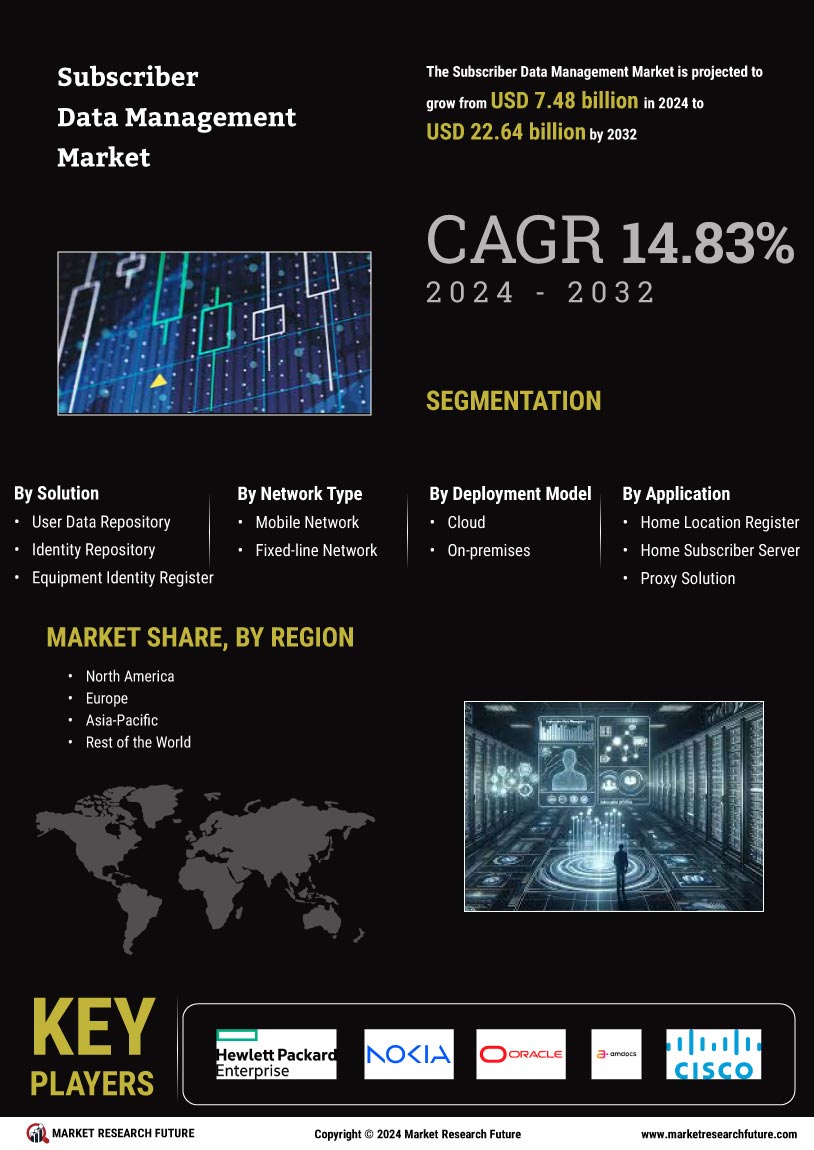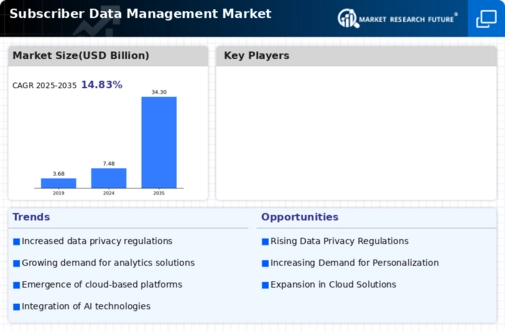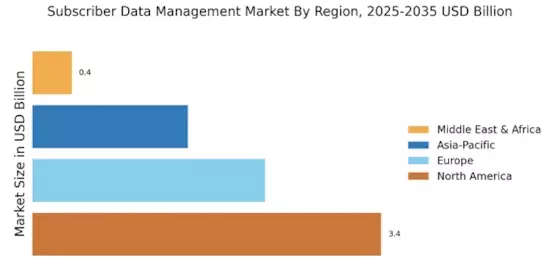Emergence of 5G Technology
The Subscriber Data Management Market is poised for transformation with the emergence of 5G technology. The rollout of 5G networks is expected to significantly increase the volume of subscriber data generated, necessitating advanced data management solutions. As 5G technology enables faster data transmission and connectivity, telecommunications companies are likely to face challenges in managing the influx of subscriber data. Market analysts predict that the subscriber data management solutions tailored for 5G networks will experience a growth rate of over 20% annually. This shift presents opportunities for vendors to innovate and develop solutions that can efficiently handle the complexities associated with 5G subscriber data, thereby enhancing service delivery and customer satisfaction.
Rising Demand for Data Analytics
The Subscriber Data Management Market is experiencing a notable surge in demand for data analytics solutions. Organizations are increasingly recognizing the value of data-driven decision-making, which is leading to a heightened focus on subscriber data analysis. According to recent estimates, the market for data analytics in subscriber management is projected to grow at a compound annual growth rate of approximately 25% over the next five years. This growth is driven by the need for businesses to derive actionable insights from subscriber data, enabling them to enhance customer engagement and optimize marketing strategies. As companies strive to remain competitive, the integration of advanced analytics tools into subscriber data management systems is becoming essential, thereby propelling the overall market forward.
Adoption of Cloud-Based Solutions
The Subscriber Data Management Market is witnessing a significant shift towards cloud-based solutions. Organizations are increasingly migrating their subscriber data management systems to the cloud, driven by the need for scalability, flexibility, and cost-effectiveness. Cloud solutions allow businesses to manage vast amounts of subscriber data without the constraints of traditional on-premises systems. Recent data indicates that the cloud segment of the subscriber data management market is expected to account for over 60% of the total market share by 2026. This transition not only enhances data accessibility but also facilitates real-time updates and collaboration among teams, thereby improving operational efficiency. As more companies embrace digital transformation, the demand for cloud-based subscriber data management solutions is likely to continue its upward trajectory.
Regulatory Compliance and Data Governance
The Subscriber Data Management Market is increasingly influenced by the need for regulatory compliance and robust data governance frameworks. With the rise of stringent data protection regulations, organizations are compelled to implement comprehensive data management strategies to ensure compliance. This trend is particularly evident in sectors such as telecommunications and finance, where subscriber data is highly sensitive. Recent reports suggest that companies investing in compliance-focused subscriber data management solutions are likely to see a 30% reduction in data breaches. As businesses prioritize data security and privacy, the demand for solutions that facilitate compliance with regulations such as GDPR and CCPA is expected to grow, thereby driving the overall market.
Growing Importance of Customer Experience Management
The Subscriber Data Management Market is increasingly recognizing the critical role of customer experience management. Organizations are focusing on leveraging subscriber data to create personalized experiences that enhance customer satisfaction and loyalty. Recent studies indicate that companies that prioritize customer experience are likely to achieve a 15% increase in customer retention rates. As businesses strive to differentiate themselves in a competitive landscape, the integration of subscriber data management solutions with customer experience strategies is becoming paramount. This trend is expected to drive the demand for advanced tools that enable organizations to analyze subscriber behavior and preferences, ultimately leading to improved service offerings and customer engagement.


















Leave a Comment